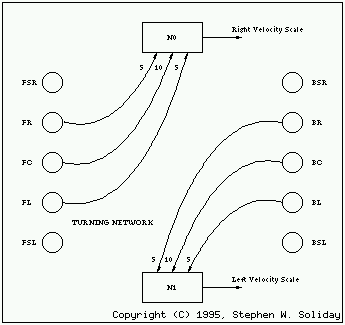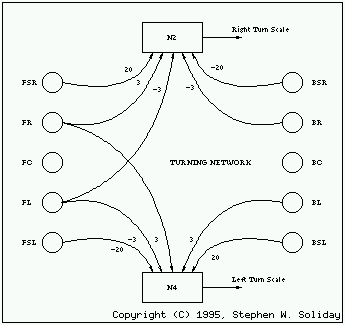

Figure 13.5: Edge Follower Networks


Two networks with linear processing elements were constructed. Figure 13.5 describes the interconnection of the processing elements with the sensor inputs(1,2).
The nodes (N_0) thru (N_3) have the same transfer function:

The desired heading was then determined based on the current heading state and the network output:
The desired velocity was then determined based on the current velocity state and the network output:

Determining the turning angle required making a decision as to whether the wall to follow is to the left or to the right of the vehicle. This is done in a simple manner. In sensor section, it was discussed that the signal inputs of the sensors drop off exponentially as the obstruction range increases. Therefore, by simply making a right and left sum of the sensor values, and ignoring straight ahead and behind, it can be determined which side of the vehicle contains the dominant obstructions.

where (kappa) is determined based on the dominant sum of sensor values. If the right side sensors sum to be greater than the left side, then (kappa = 2), else (kappa = 3).
Likewise (chi) is determined from front/back dominance.

where (range_set) is a user defined quantity specifying the desired distance away from obstructions that the vehicle should edge follow. And (r) is determined from the following conditions.

where (S_x) and (R_x) are the sensor signal intensity and the calibrated range respectively.
This module is part of a robotics simulation that was demonstrated in a Master's Thesis entitled: